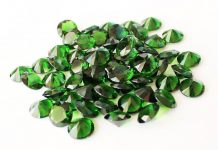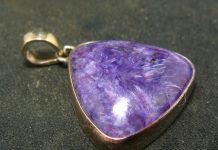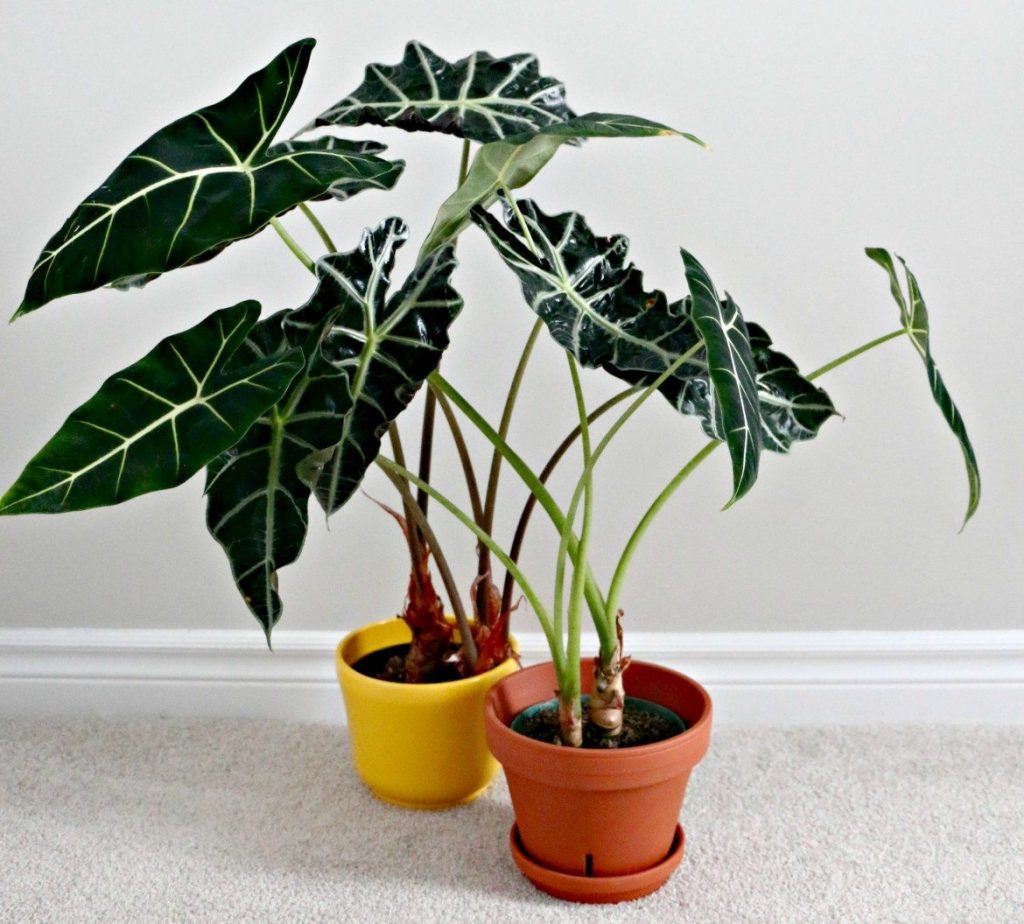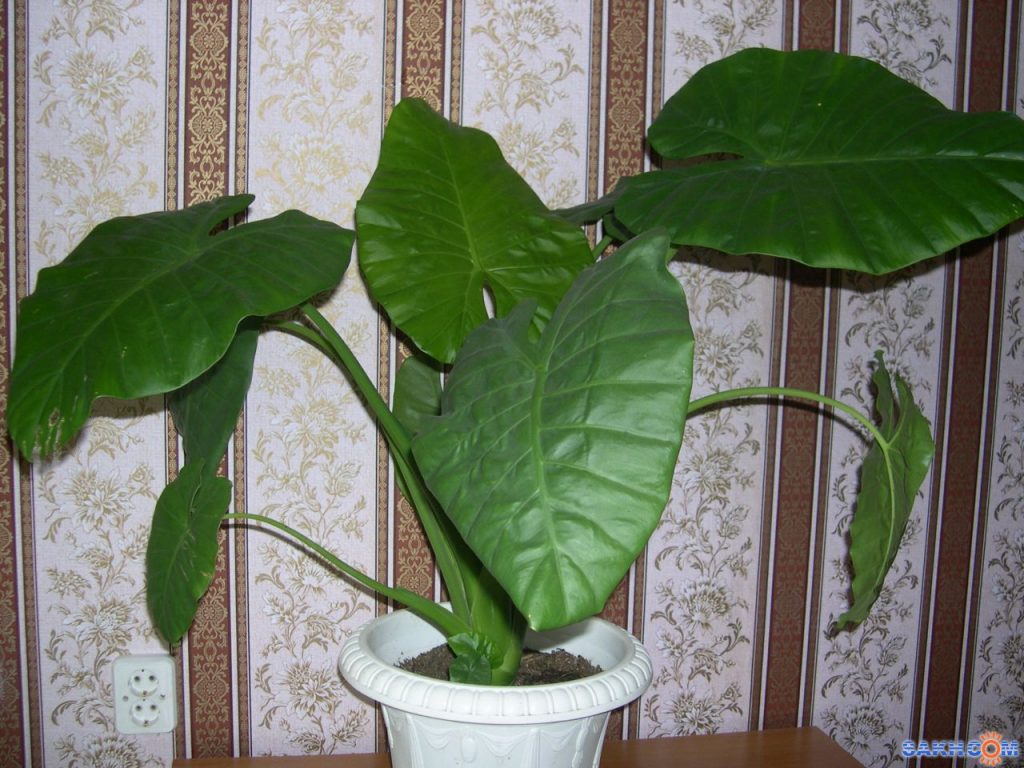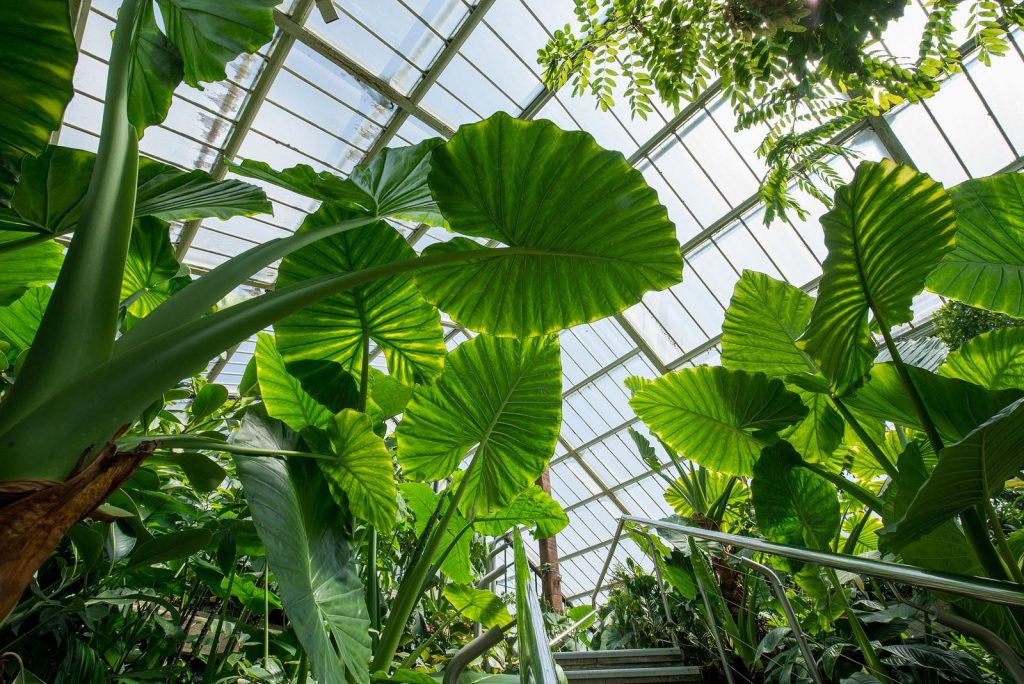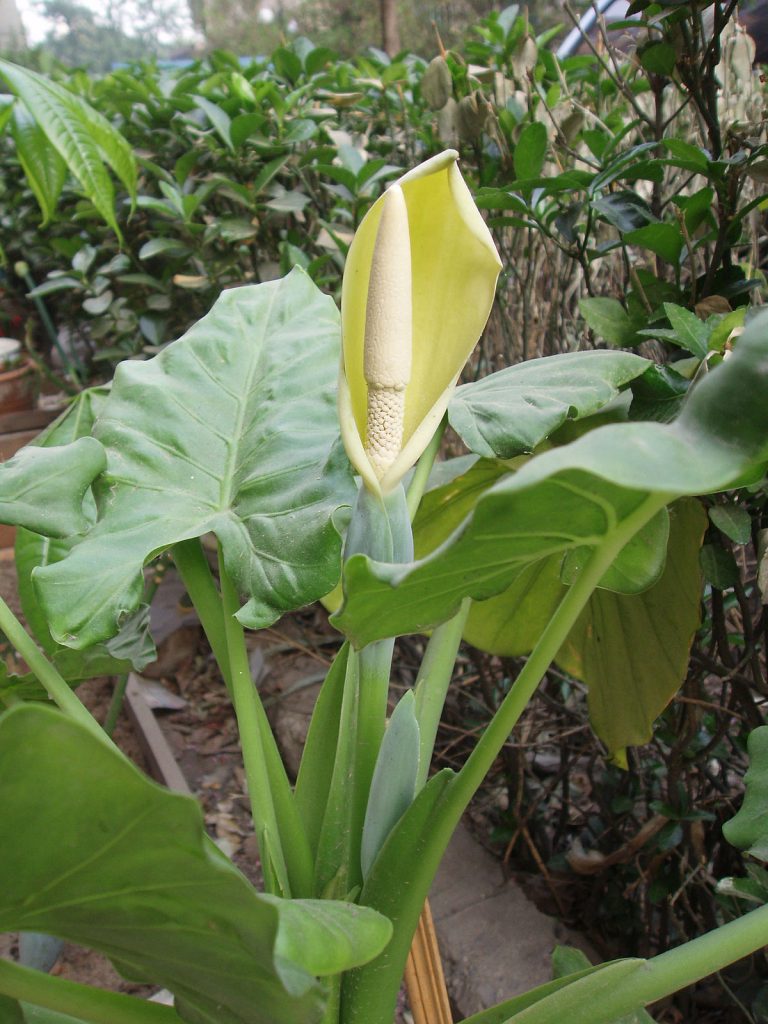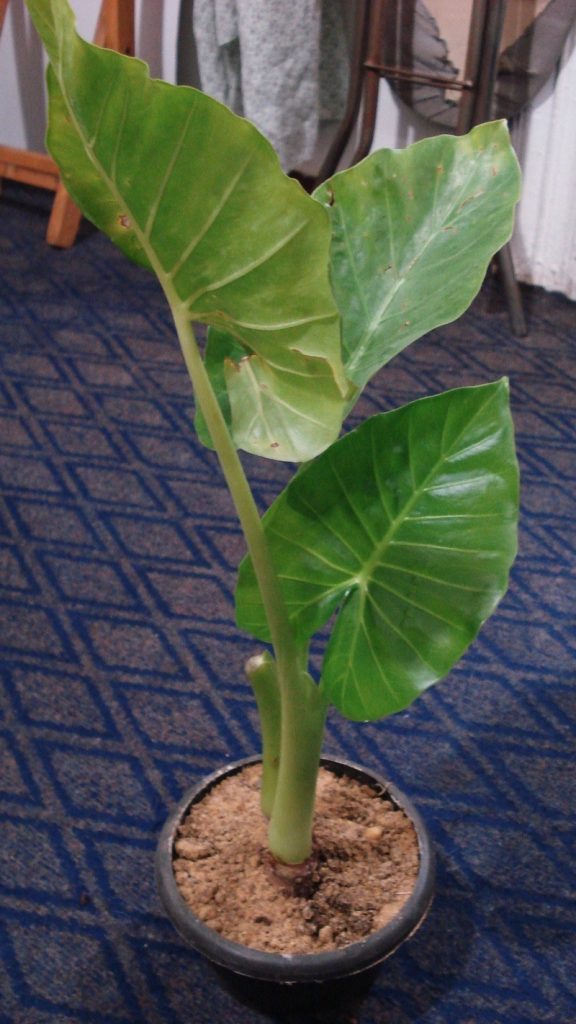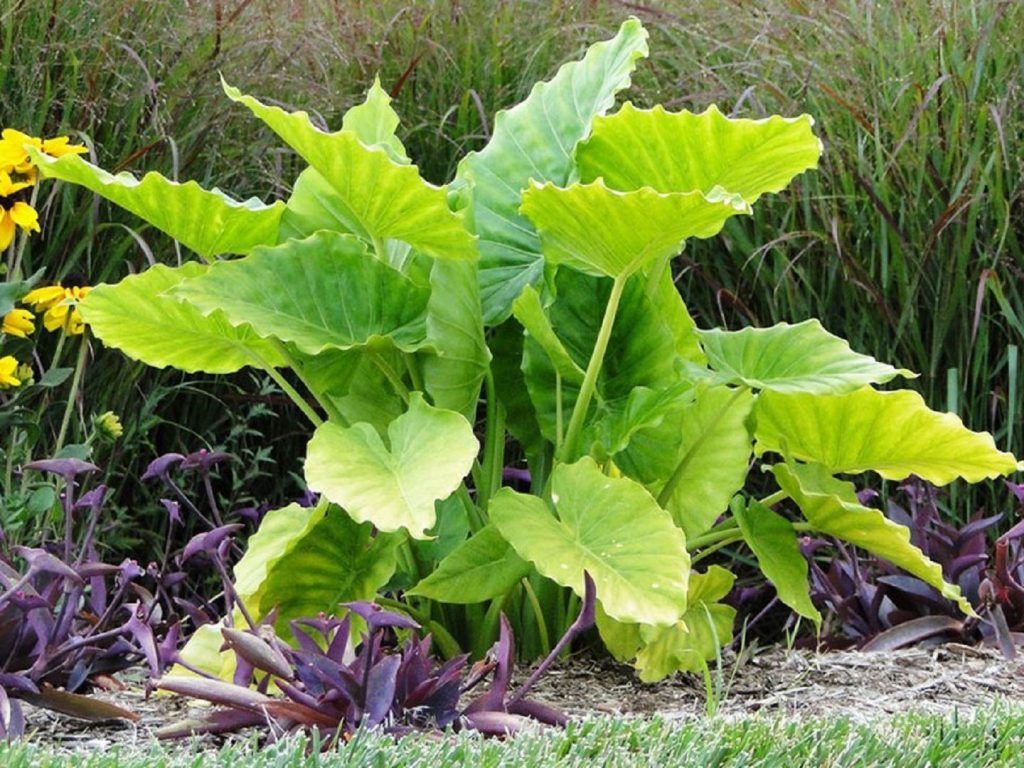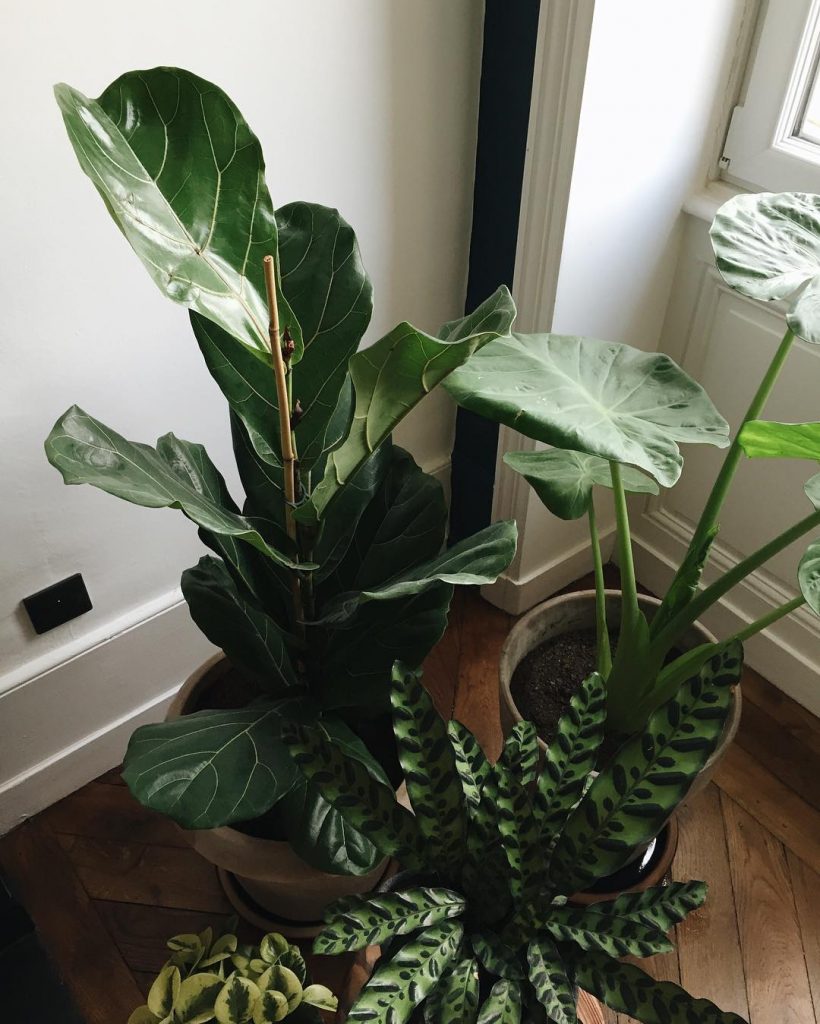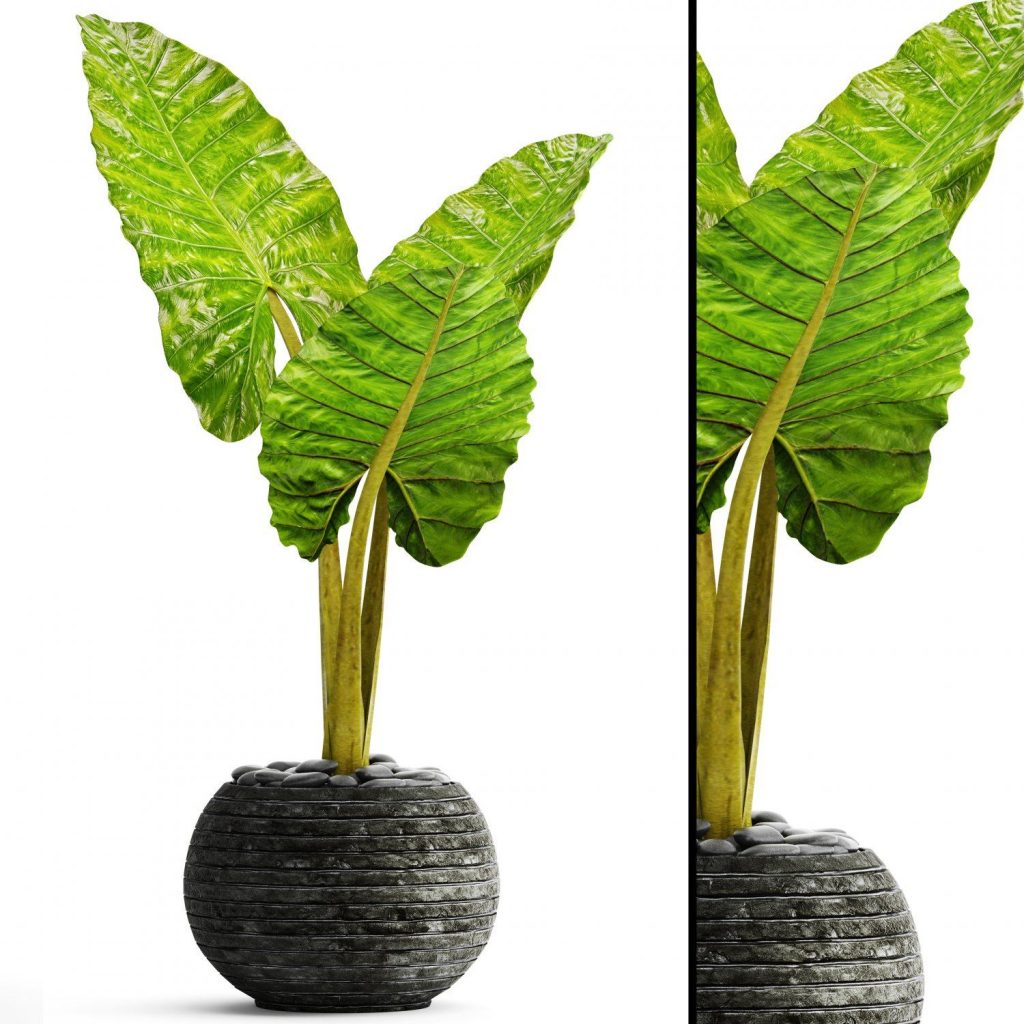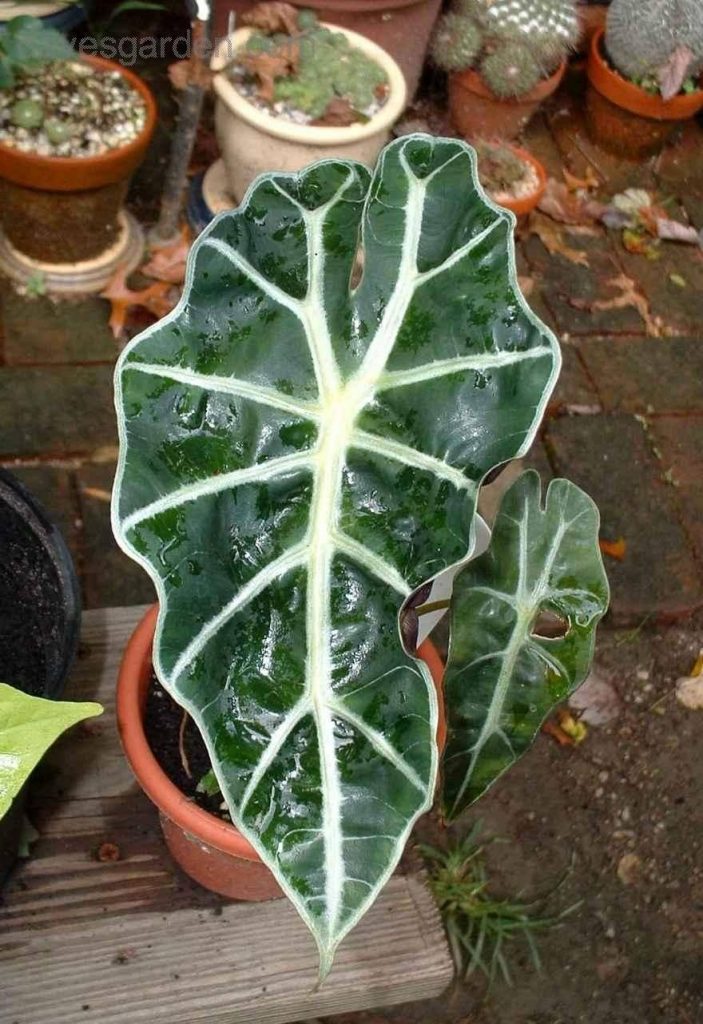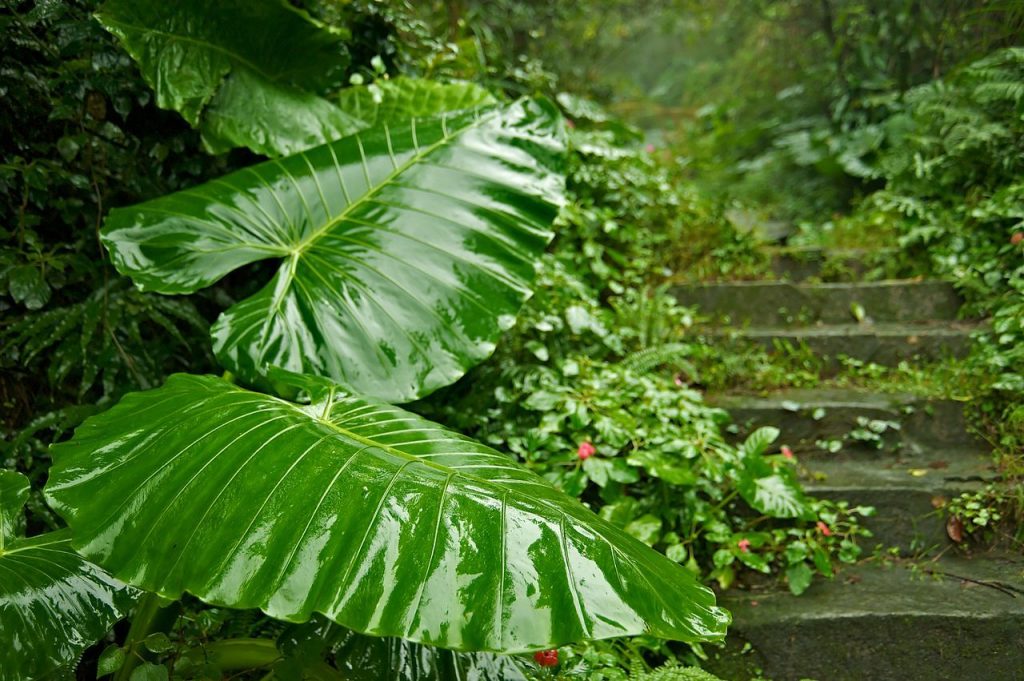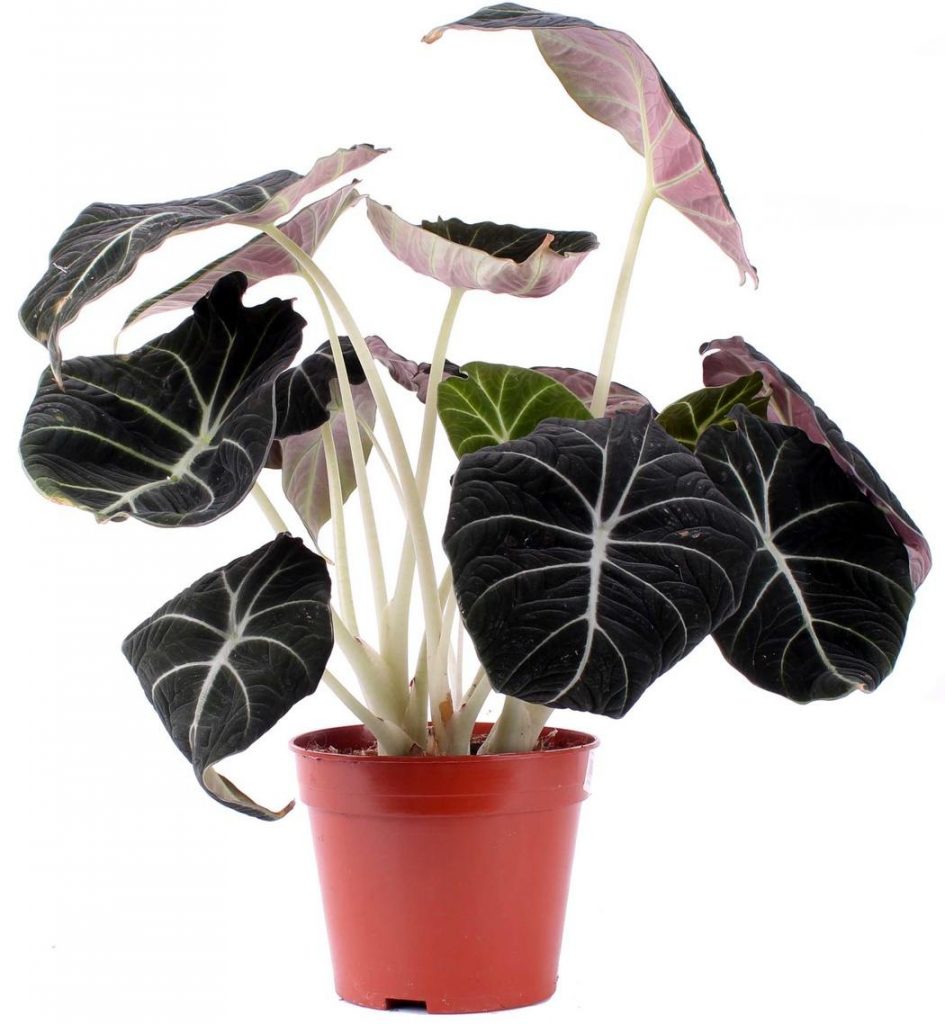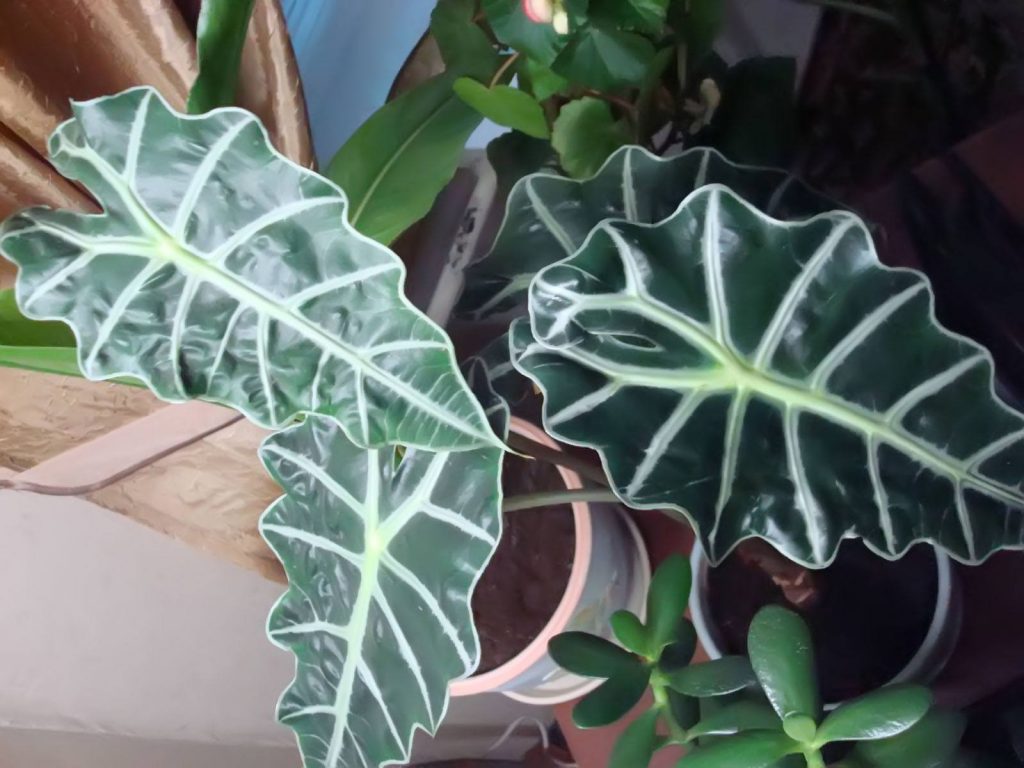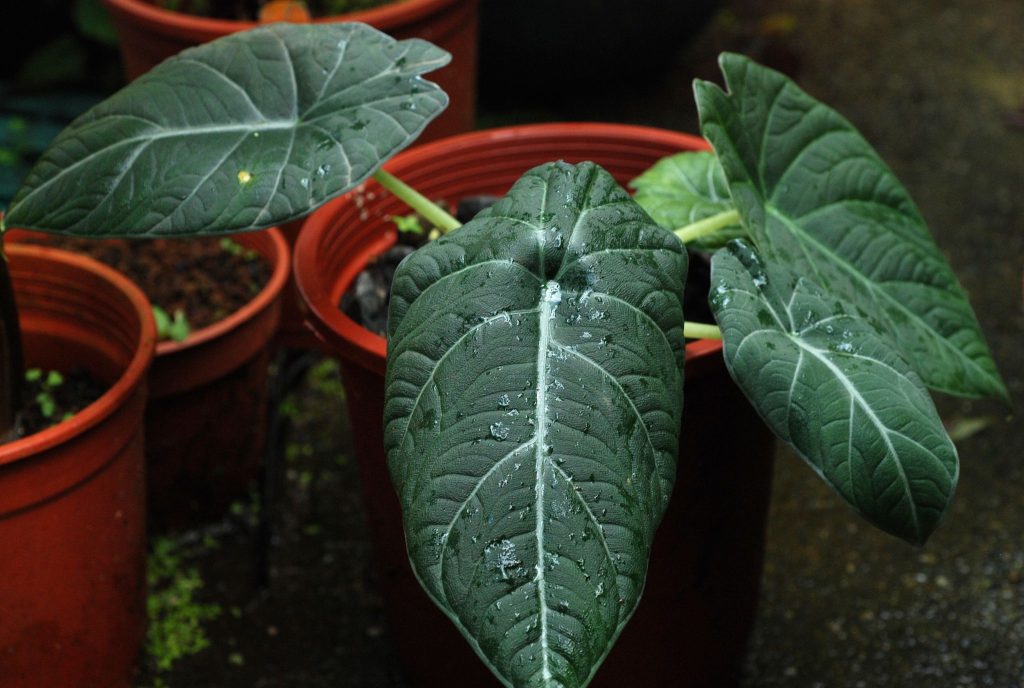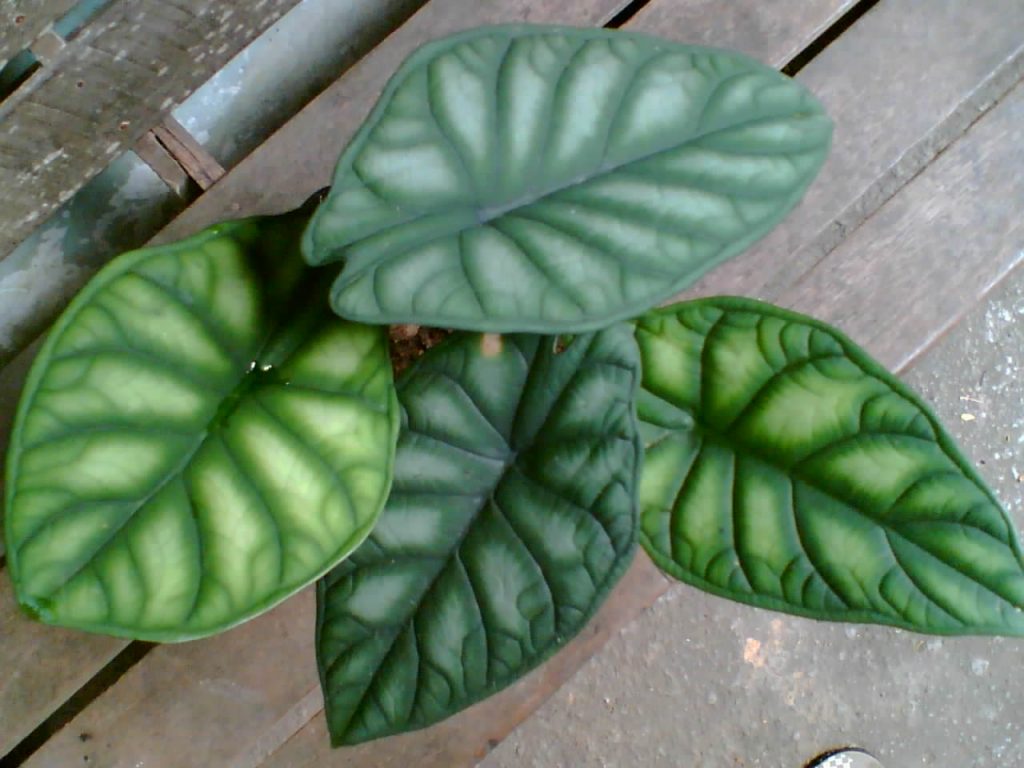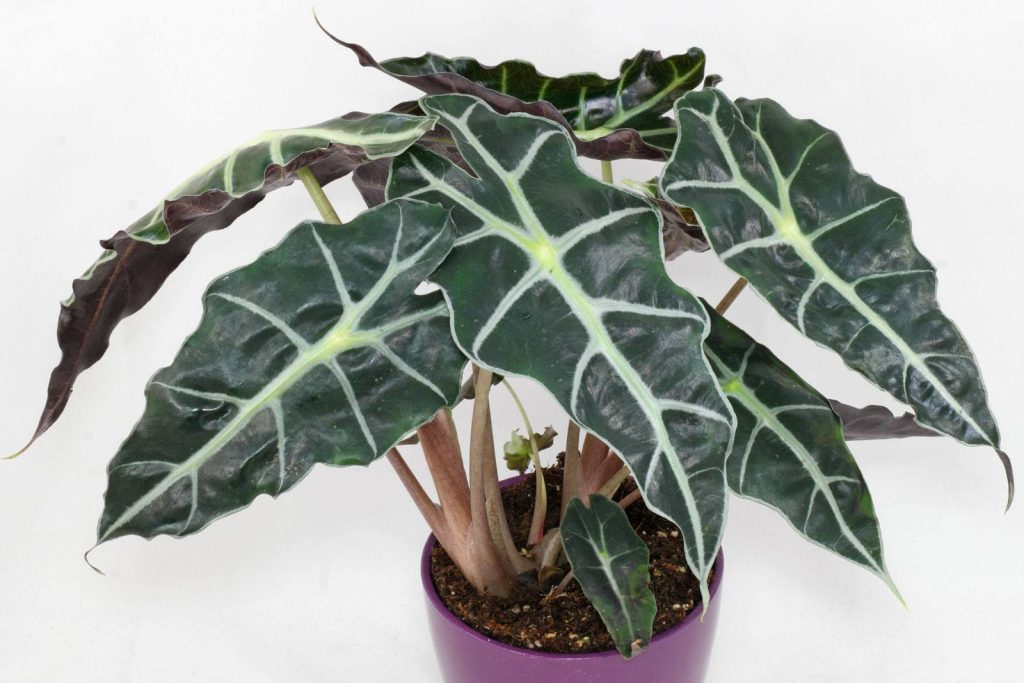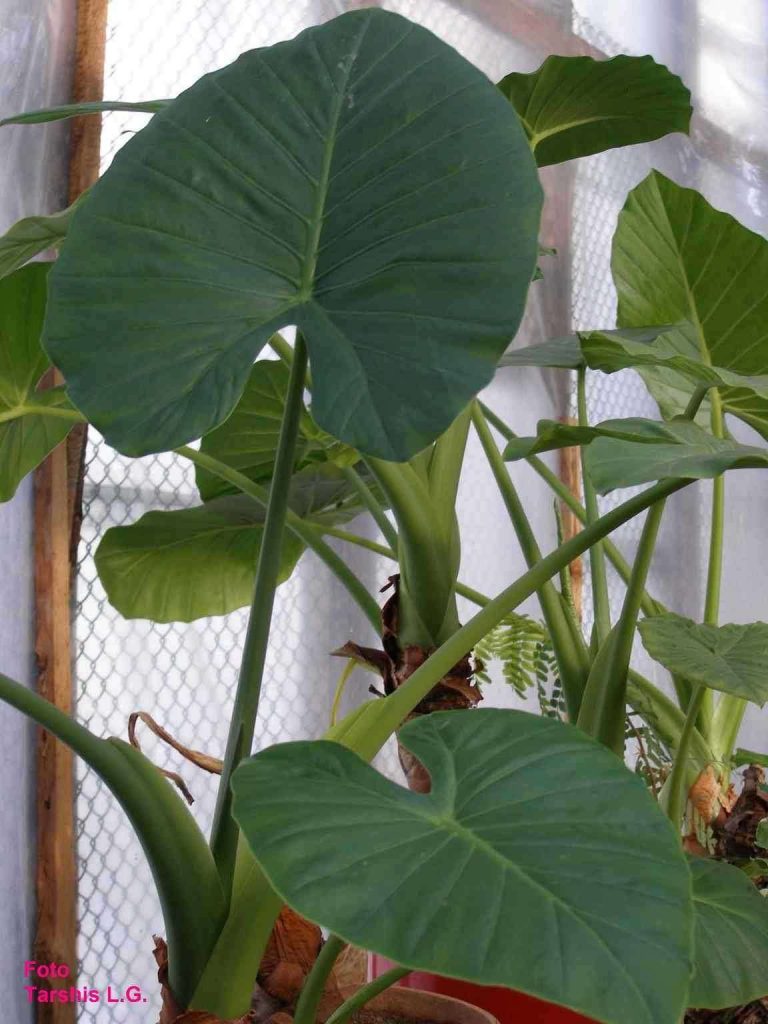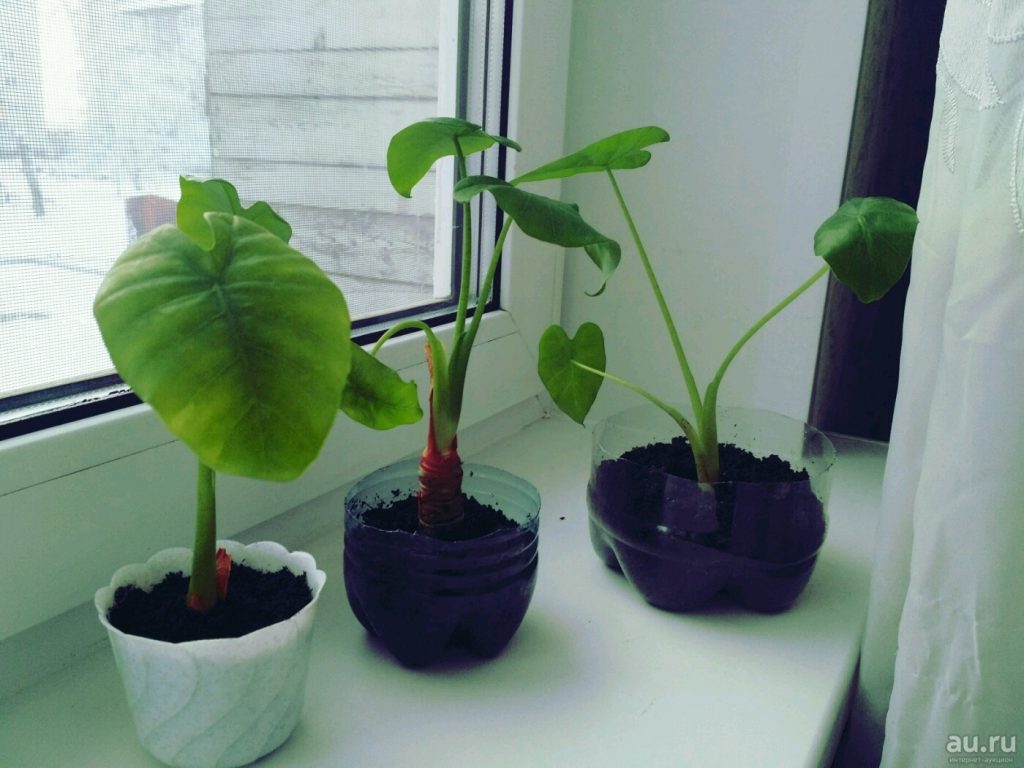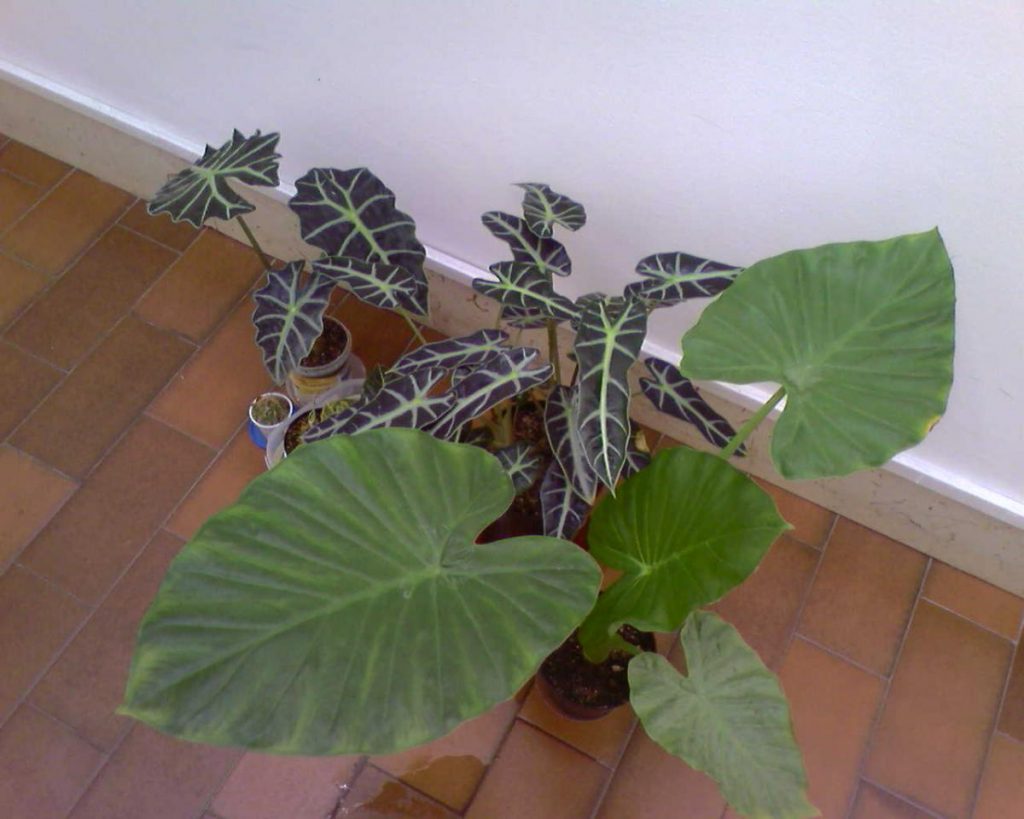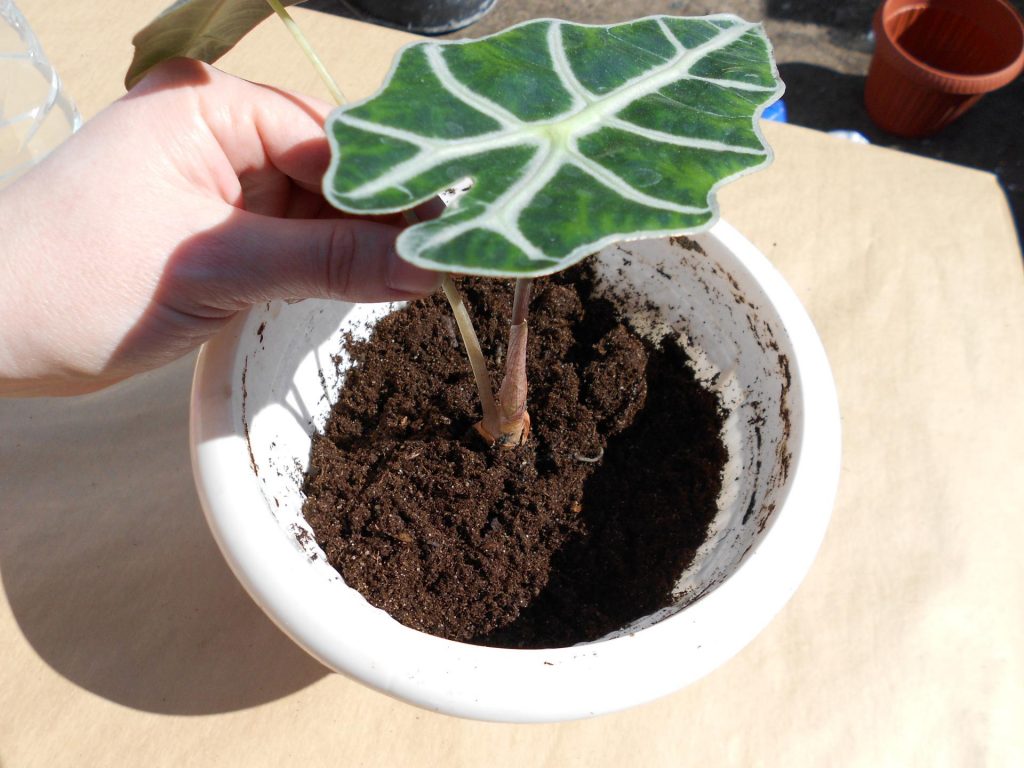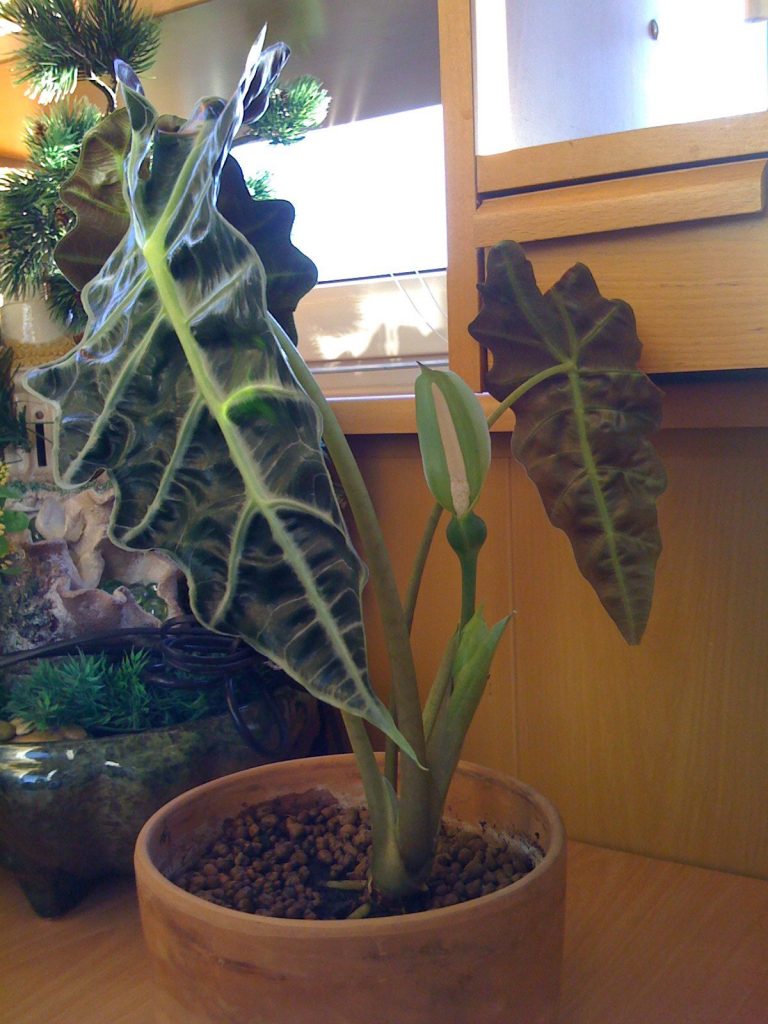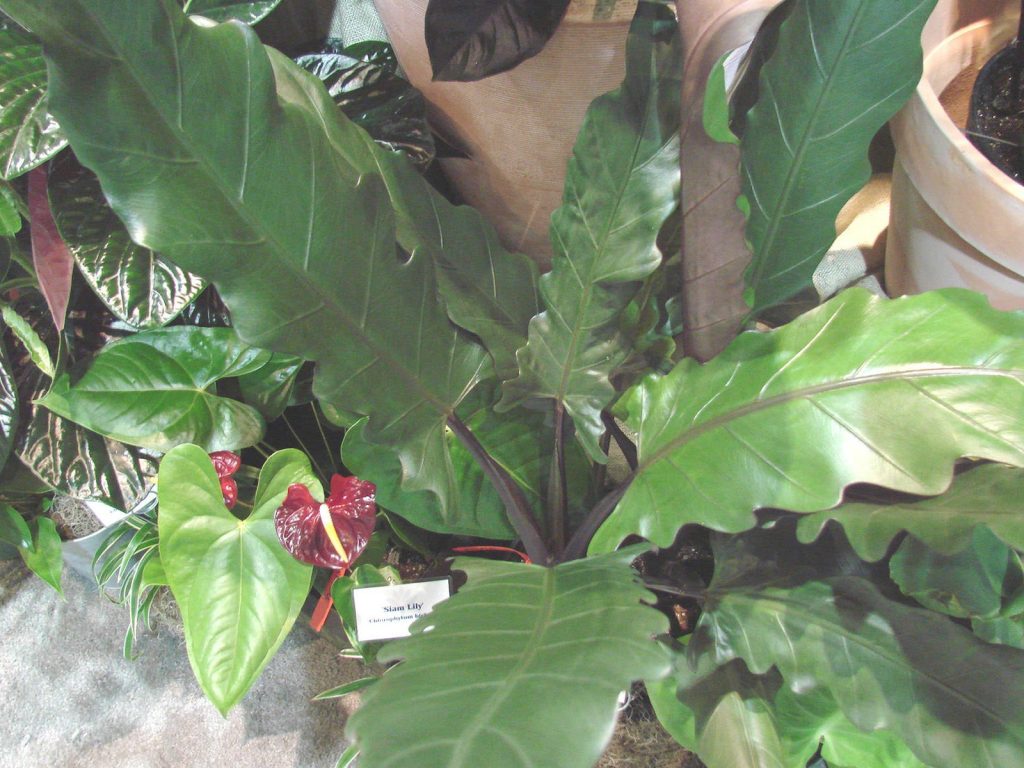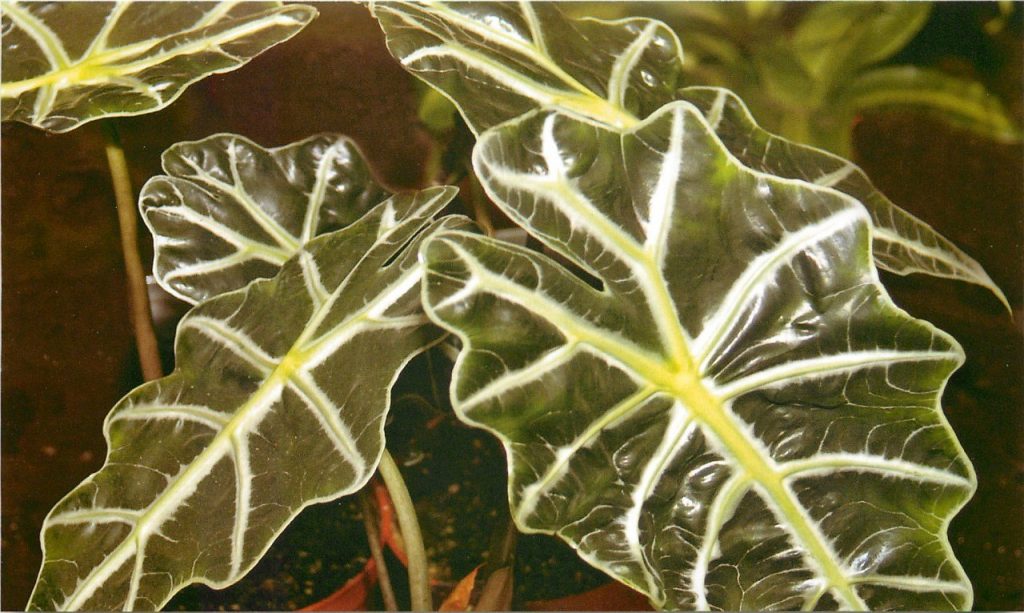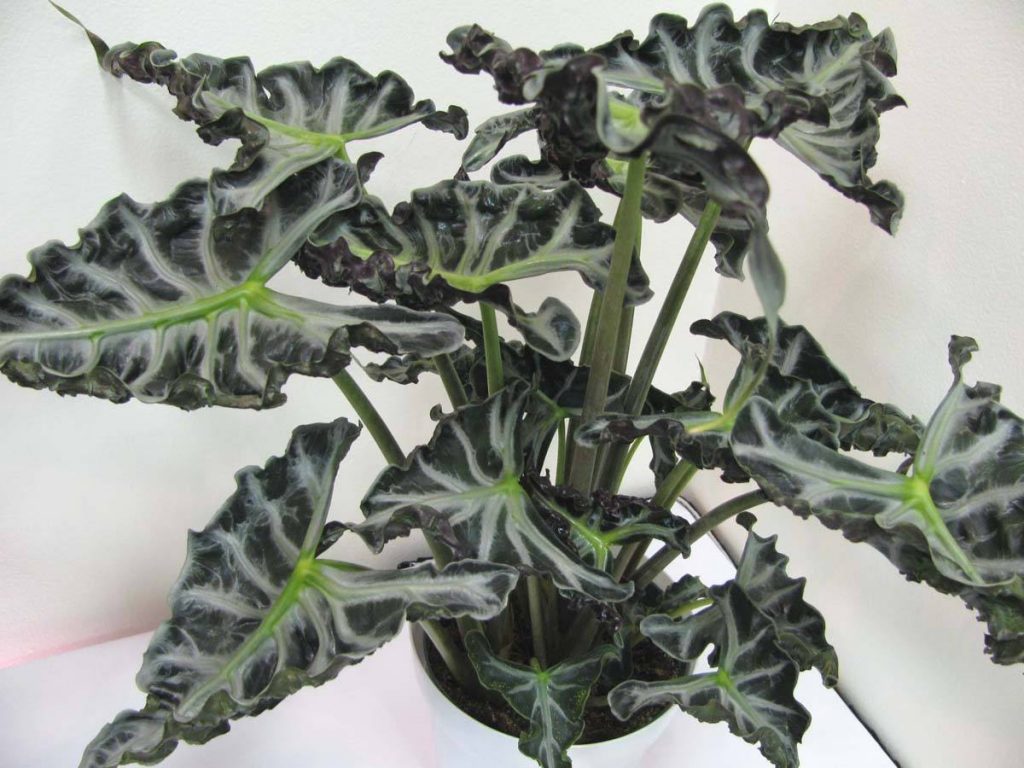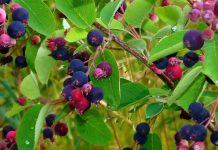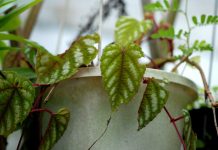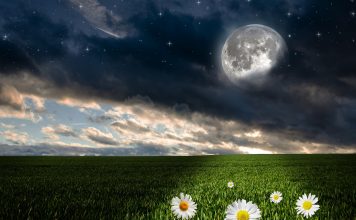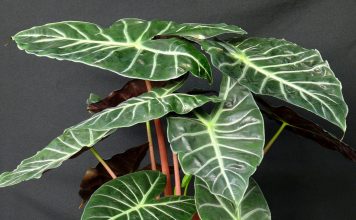Alocasia is a tropical plant belonging to the aroid family. Home to this unusual plant are Malaysia, Australia and some countries in Latin America. The peculiarity of Alokazia is its large thyroid leaves with sharp ends. In total there are about 70 species of this plant, but not many can grow at home. In the main houses you can find alokazii Kalidor, Lowy, Sander and klobuchkovidnaya. How to care for this plant?
Alokaziya description
Alocasia is an evergreen herb with a large root that resembles stolons or elongated tubers. Above is a shortened stem. Leaves grow on elongated petioles. They may have a thyroid, oval or heart-shaped. Their edges can be both smooth and ribbed.
Often this plant is called "weather forecaster", since it can be used to determine the weather.On the eve of rain, when the humidity rises, the plant begins to get rid of excess moisture and droplets appear on its leaves.

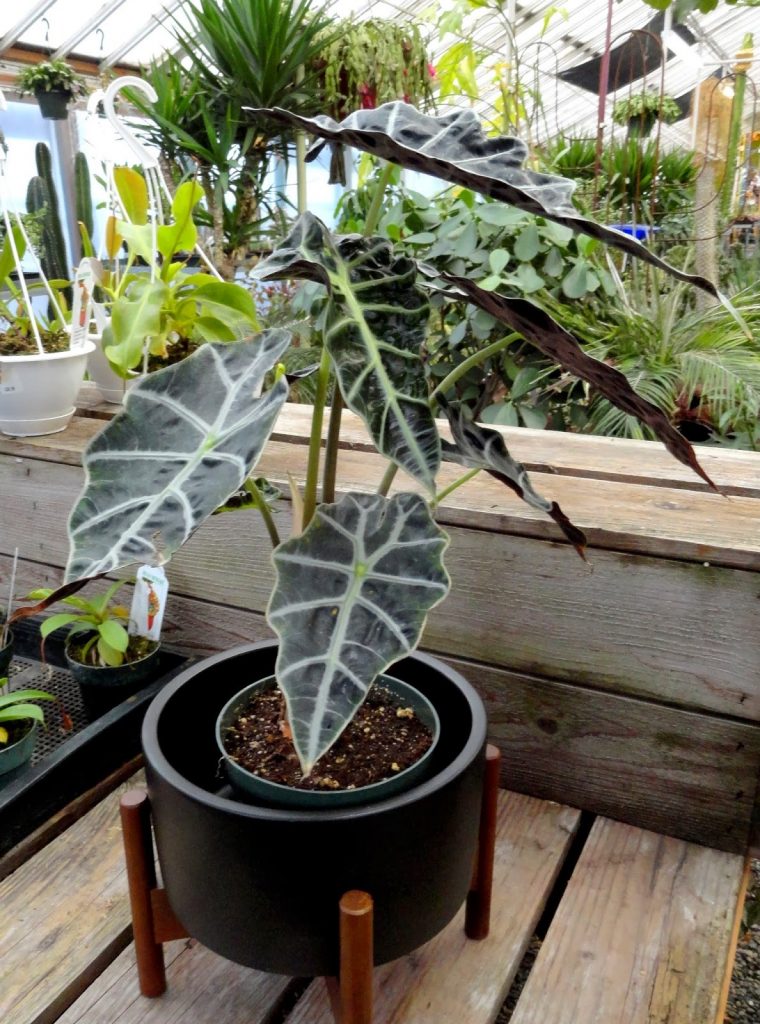

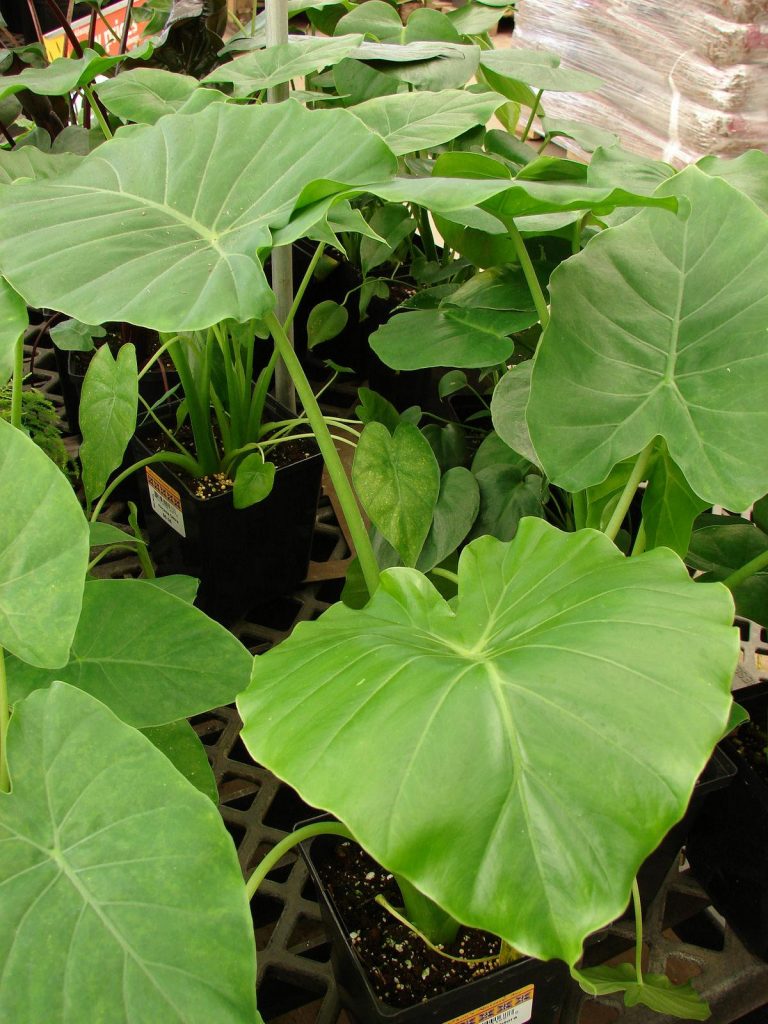
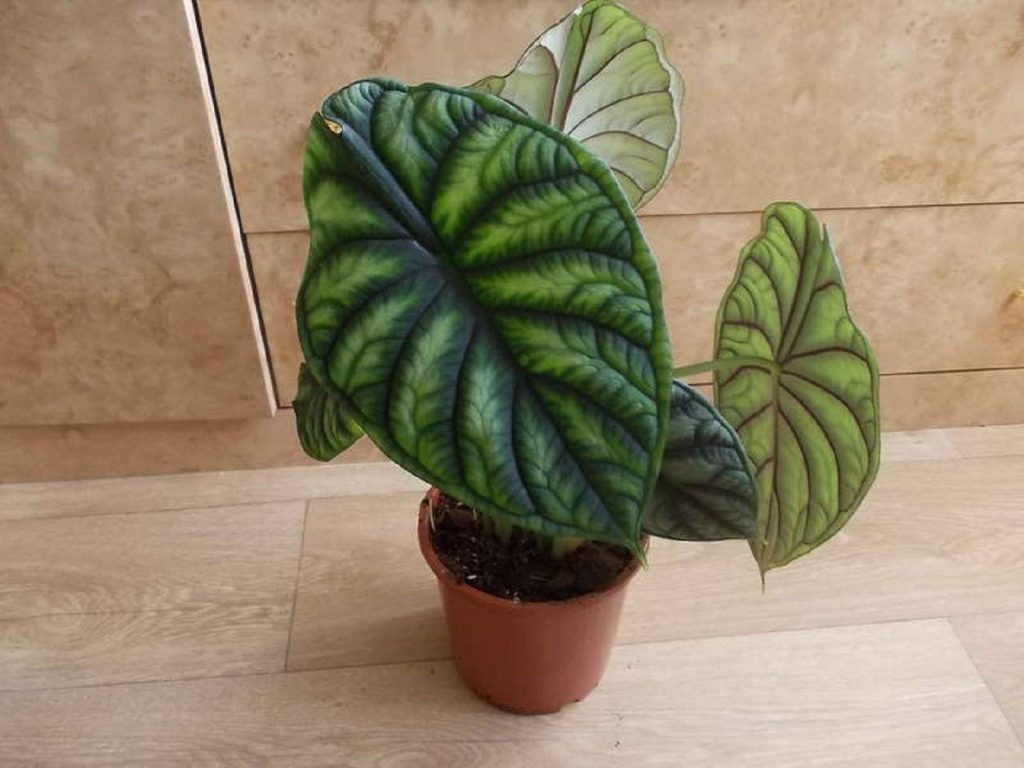 At home, alokaziya blooms extremely rarely. Its flower resembles a shortened ear of white or yellowish hue. From above it is covered with a kind of veil. Gradually, it cracks and inside you can see bright red fruits. During the flowering of alokaziya, the leaves of the plant may fall, so some deliberately cut the ovary of the flower.
At home, alokaziya blooms extremely rarely. Its flower resembles a shortened ear of white or yellowish hue. From above it is covered with a kind of veil. Gradually, it cracks and inside you can see bright red fruits. During the flowering of alokaziya, the leaves of the plant may fall, so some deliberately cut the ovary of the flower.
The plant is poisonous, so care should be taken when caring for it. The juice of alokazii can irritate the skin. But this plant has medicinal properties. Its essential oils and phytoncides have analgesic properties and can stimulate the body. Specialists in traditional medicine are prepared from alokazii tinctures that can relieve from gastric, dental and joint pain. At the same time that such a tool does not become poison, it is important to correctly observe all proportions in its manufacture.


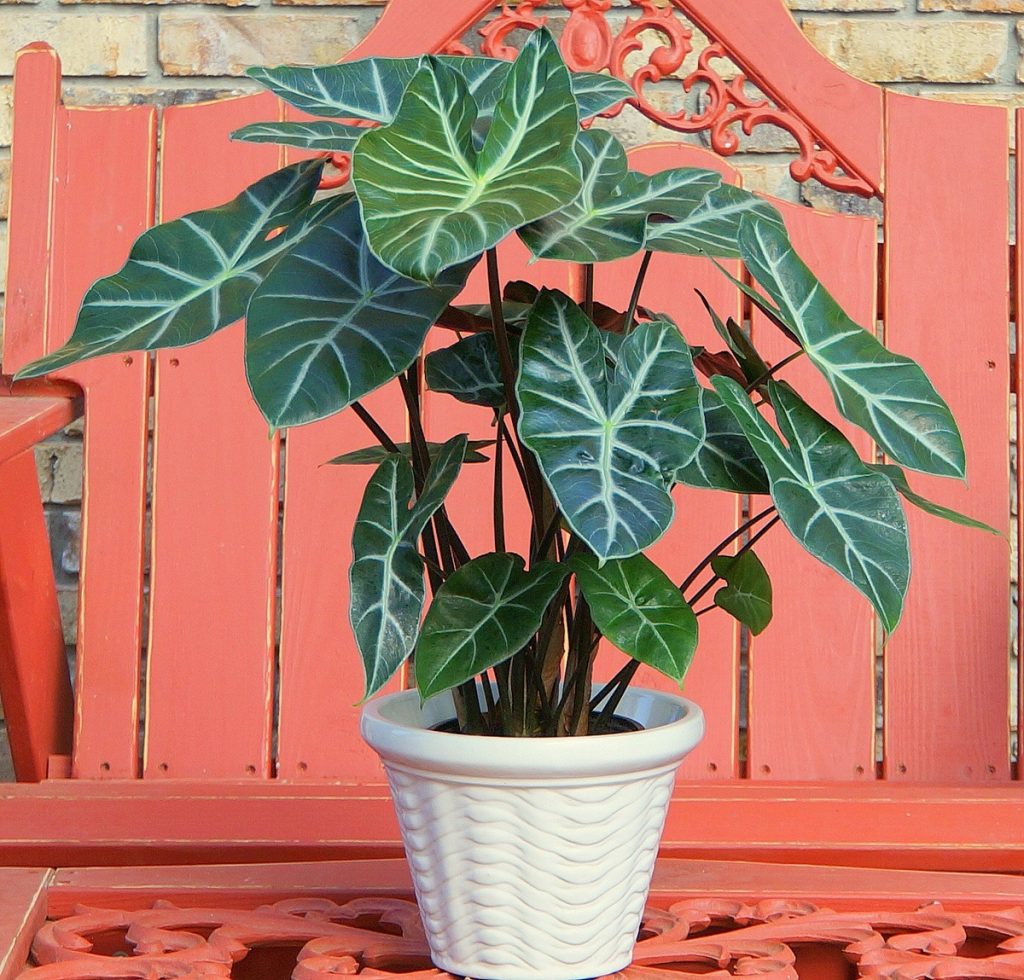
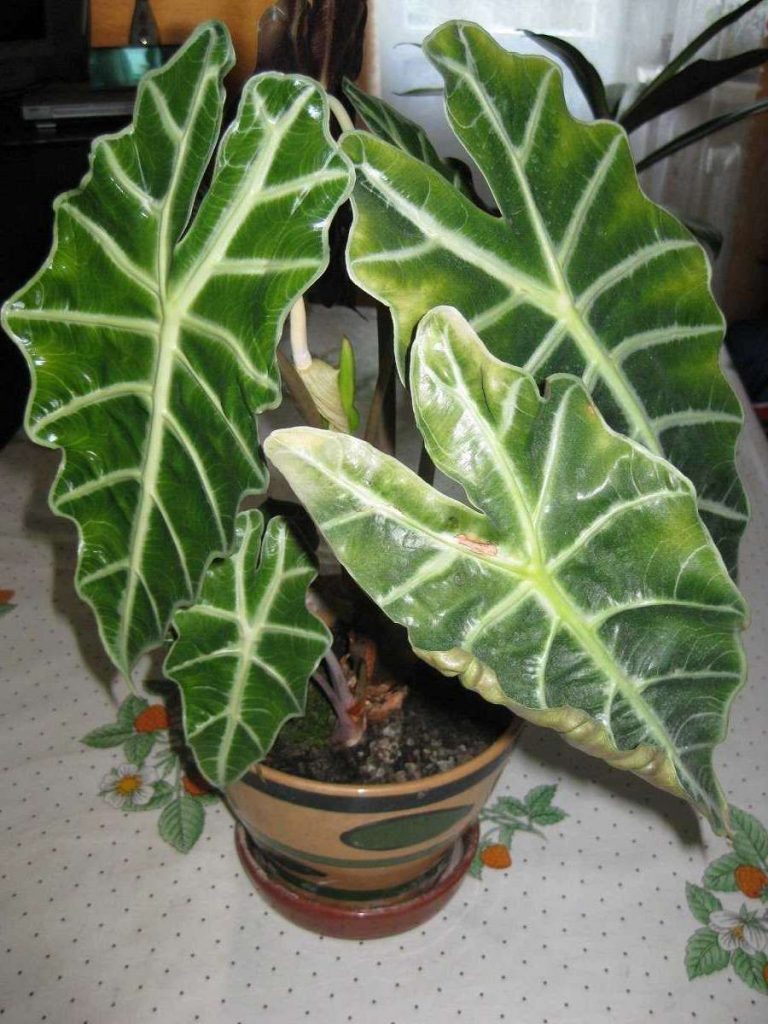 Types of Alokaziya
Types of Alokaziya
In total there are about 70 varieties of alokazii. They all differ in plant height, size, shape and color of its leaves. At home, there are not many species of this plant. The most common ones are:
- Alokaziya Polly. The plant grows short with a short stem and large leaves, collected in a rosette at the root. The leaves have a thyroid shape. Their length can reach 50 cm and width - 20 cm. The surface of the leaves is glossy, dark green with large light veins.
- Alocasia large root. A feature of this species is the large, heart-shaped leaves that grow on the fleshy stem.
- Alocasia klobuchkovaya. The dense lush crown of a plant consists of bright green leaves of an egg-shaped form.
- Alocasia is coppery. This type of plant survives best at home and is often used for decorative purposes. Its leaves are heart-shaped. From above they are painted in a copper-green, and from the bottom a purple hue.
- Alokaziya odorous. This species is distinguished by large bright leaves with white spots.
- Alokaziya Kalidora. One of the largest plant species and can grow to a height of several meters. Her leaves are bright green, glossy. Often used to decorate winter gardens.
- Alokaziya Sander has a short rhizome. The leaves are long swept with pinnate lobes.
- Alocasia Low has a short trunk. Oval or swept leaves grow on long petioles. Sheet plate has a pale green shade with silver streaks.
Reproduction alokazii
The plant can be propagated by grafting, dividing a bush or planting seeds.
For planting seeds suitable sand and peat mixture. This should be done in the spring, immediately after collecting the seeds, as they quickly lose their ability to germinate. Seeds are planted to a depth of no more than 1 cm. After that, the soil is moistened, and the pot is covered with foil. Keep it in a warm place. Usually the first shoots appear 3 weeks after planting.
As soon as several leaves appear on the shoots, they should be dived into pots of small diameter. Alokaziya should be transplanted for the first time only when the roots completely entwine the earth in a pot. Usually large leaves on the plant begin to appear after 1 year.
Using the method of grafting can save many varietal characteristics of the plant. To strengthen the cutting in the first half of spring, a leaf with a part of the stem is cut. This place is treated with charcoal dust, and the cutting itself is aged a little in the root and is placed in a sand-peat mixture. If everything is done correctly, after a few weeks you will have a new young plant that is able to immediately produce large leaves.
The third method of breeding alokazii - the division of the bush. This is usually done in the spring during plant transplantation. At first, the roots are completely cleared of soil and the bush is divided into several parts with a sharp knife.In such a case, it is important that each of the separated parts should have a growing point or a sheet rosette. After processing the cut with activated carbon, the plant can be planted in the ground.
It is necessary to replant a plant several times a year. To do this, select a steady pot, the bottom of which is placed drainage. The soil should be nutritious and loose. The ideal would be a mixture of peat, leaf and coniferous land with the addition of river sand.
Alokaziya: care at home
The plant is unpretentious, so take care of him is quite simple. Alocasia prefers bright places, protected from direct sunlight. Flower species with red foliage need extra light. For this you can use an ordinary lamp.
Best of all, the plant feels at a temperature of at least +20 degrees. Any sudden changes in temperature and drafts can lead to diseases. In winter, alokaziya is able to withstand a brief cooling of air up to + 16 degrees. If the room is colder, the plant will drop the leaves. When frost plant dies.
Like other tropical plants, alokazia prefers moist air. To do this, its leaves must be periodically (preferably daily) sprinkled with water. Water the plant should be abundant, controlling that the soil in the pot does not dry out and always remain wet. In winter, the number of waterings should be reduced, avoiding long breaks.
In the period from March to August, alokaziya should be constantly fed with mineral fertilizers, which are added to water for 1 week every 2 weeks.
Bloom alokazii
If properly care for the plant, then alokaziya can bloom. The flower is unattractive and gives off a strong smell, which can even cause headaches. In this case, all the forces of the plant go to the flowering and ripening of the seeds, so the leaves begin to dry and fall off.
Diseases of alokazii
Sometimes the leaves of the plant may become pale, dry or blotchy. So alokaziya sick. The reason for this may be drafts, improper watering, the lack of full lighting or insufficient room temperature.
In addition, alokaziya can be prey to various parasites. For example, aphids, scale insects, etc. Insecticides can be used to control them.
Alocasia is quite unpretentious in the care and at the same time an incredibly beautiful plant, which with proper care will be an excellent decoration of any room.

























